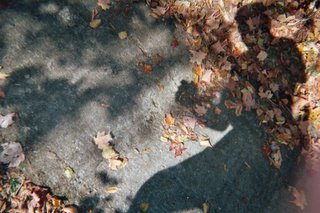
In Zen there is a saying:
If you would seek enlightenment, begin by sweeping the floor. Or something like that. In my own--probably un-Zen-like-- way, I've long interpreted it to mean: clean out the cobwebs; make space for possibility.
So, with the ideas and inspirations for a CD project to be called BOOK OFJOURNEYS II in place, I do just that. The technique is simple, involving writing in my hard-copy journal. I list the pieces-- unfinished demos and musical sketches-- and let myself imagine what elements-- mixing, eq, added instruments, etc.-- might bring them to their full realization. This proves to be not very difficult, as my subconscious has, it seems, been at work on this for a while. Now these pieces are a step closer to existing as entities outside myself; the busy cutting-room floor of my brain has been swept clean.
Now it's a matter of actually doing.
For example, there's a ghostly country story-song I wrote and recorded back in December called "Ghosts In the Dance Hall." The basic tracks are twangy Telecaster guitars, drum machine, and three vocal parts. Each part is a different character in the song; I intended the demo for the singers in Rusty Romance, with myself as narrator, Rusty (in full slap-back echoed glory) as the ghostly truckdriver from the past, Michelle as the dance hall goddess with whom he dallied on a fateful night. (On the demo I sang all three parts, which was really, really fun, using the great, funky, vibey Radio Shack mic. that Robin bought me for our first Christmas together, way back in the 80s.)
So over the course of a few days I try the steps outlined in my journal. I spend a long time adding snare-drum accents to the cheesy drum machine beats, adding some air and room and human error. I'm not the world's best drummer, but eventually I get it right. I make a number of mixes, with panning and EQ changes, a touch of compression. After a while it starts to take on the 1969 AM radio sound I'm hearing in my head. It still needs something: some Dobro or steel guitar or mandolin. But I'm not ready to jump into that quite yet.
It's a few days later that it comes to my conscious mind where I got the original inspiration for the song. Strangely enough, it's from the journals of monk and writer Thomas Merton. In a mid-sixties journal, he describes the experience of coming upon the decayed remains of an old dance hall in a Kentucky hollow. He feels the presence of the people who had once been there.
It's a feeling I know well: the sense of land and life (I take that phrase from the geographer Carl O. Sauer, who will very likely come up again in this journal .) Anyway, to find in the writings of a Christian mystic solitary the inspiration for a slightly corny country ghost story... well, it just makes very clear to me how strange and mysterious the creative process can be.